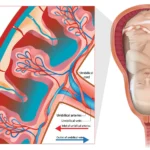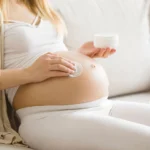Postpartum Anxiety (PPA) and Postpartum Depression (PPD) are two conditions that are known to affect women after delivery. These two are completely different disorders that affect the mental, emotional and physical well being of women, but are related to each other. More and more women in the recent years are being diagnosed with one of these issues. It may be due to increasing stress and pressure stemming from work or society.
Postpartum anxiety
About 10% women who have had a baby recently are affected by this disorder. Signs of postpartum anxiety include constant worrying, feeling scared and racing thoughts on mind. Typical new mothers usually have everyday struggles dealing with the major changes and their newborn. Postpartum anxiety is different from this. It is when you feel everything is out of control and have disturbing thoughts about something happening to your baby. You may be constantly checking up on your baby, even while she is sleeping, afraid that something bad might happen to her in sleep.
It is common for new mothers to have these thoughts, as it brings out their protective instinct, but most women learn to dismiss them and move on. It is when you can’t get these thoughts out of your mind, things start getting worse. Your thoughts can interfere with your everyday activities and hinder normal functioning. For instance, postpartum anxiety can turn out to be dangerous, if are driving with your baby onboard.

PPA may also cause physical symptoms. These include –
- Headaches
- Racing heartbeat
- Nausea
- Dizziness
- Sleeplessness
- Blackouts
- Involuntary trembling
Postpartum depression
Postpartum depression is the intense feeling of sadness and helplessness that can get completely out of your control. This is sometimes caused as a side effect of child delivery. Having postpartum anxiety may also lead to postpartum depression in some cases. In this condition, women feel extremely sad that they are unable to take care of their baby properly or that they are not doing it right. They feel bad that they are unable to do everything and can’t seem to stop crying.
Most women may experience baby blues during the initial months of giving birth and also learn to cope with it somehow, but PPD starts affecting their behaviour and ability to care for their baby. This condition may start in the early days after delivery and may last up to many months. Postpartum depression signs include-
- Irrational fear of not being good enough
- Constant changes in mood
- Crying continuously
- Changes in eating habits
- Changes in sleeping pattern
- Avoiding friends and family
- Constantly irritated or angry
- Having panic attacks
- Self doubting and inferiority complex
- Lack of interest in earlier hobbies or activities
- Frequent thoughts of suicide or death
- Thoughts about harming oneself or the baby
- Lack of focus or inability to think straight
When you notice such changes in behavior, you should talk to your health practitioner. These conditions can be treated and you can get back to your regular life again.






